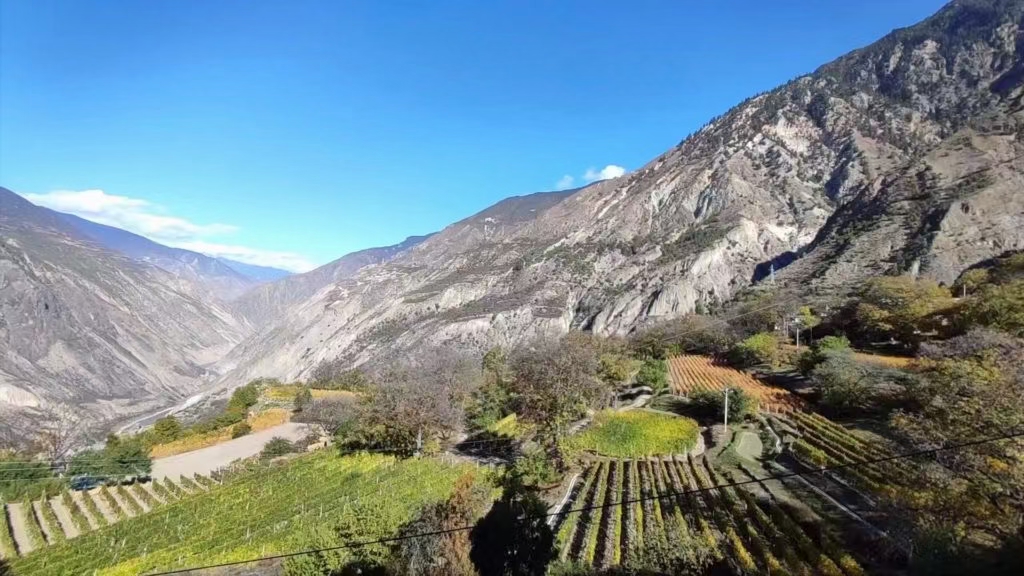
[Note: A version of this post first appeared in Grape Wall newsletter. Sign up for free here.]
Xige Estate, the sprawling high-tech Ningxia-based winery with parallels to Penfolds, is expanding to Tibet, per wine media reports.
Xige Estate was established in 2017 and quickly burst onto the scene thanks in part to wide swaths of vineyards planted in the Qingtongxia sub-region as early as 1997, previously used by Pernod Ricard and then-partner Guangxia and by the 48 contestants from 17 nations in the Ningxia Winemakers Challenge. These were paired with a high-tech setup, including VinWinzard monitoring system, and international consultants alongside operations manager Liao Zusong.
Also helping Xige get off to a quick start: owner Zhang Yanzhi, a Bordeaux-trained winemaker, headed importer and distributer Easy Cellar, known for its success in selling Penfolds Max.

The company has a stated aim of doing everything from mass market labels to top-end ones — it launched a RMB3000 / USD415 Pinot Noir — which fits that Rawson’s-Retreat-to-Grange mentality. And had initial vintages using a numbering system–N28, N50 –that seemed akin to Penfolds ‘Bin’ series. In any case, the most recent big news is about Xige’s project 2600 meters high in Tibet.

The operation is based in Zugong County in Tibet, near where that region intersects with Sichuan and Yunnan, across the border from Deqen County and its well-known Shangri-la wine scene.
Per Huaxia Wine Journal and other sources, the official announcement was made by Zhang during a March 15 banquet. The project covers 5000 mu (330 hectares), with 2000 being established vines and 3000 to be replanted. There are also several thousand vines over a century old, with some over three centuries, per media reports.

This is not expected to be the last project for Xige, as producers now seek a broader footprint and more diversified portfolios to appeal to consumers, including those for premium wines. We don’t only seen this with large to mid-sized operations but also smaller players exploring the country’s terroir, including FARMentation, Xiao Pu and Petit Mont.
Of course, Xige’s is far from the first modern vineyard or winery in Tibet. Pazhu, for example, has staked a claim to the highest vineyard in the world, according to Guinness, measured at 3563 meters above sea level in 2018.
And a high-altitude China wine class by Sophie Liu at this month’s Chengdu Wine Fair featured not only Pazhu but also Damei Yong, founded in 2009, and Qiu Zi Ka 1865, named for the year a famed French missionary arrived in the area.
There are others, too, including Tian Lu, which claims the world’s highest winery at 3911 meters.

None of this is a knock on Xige. It’s still fairly early days for the modern wine scene in those parts and China at large.
We also see other newcomers planting a flag at high altitudes, including — here’s that name again — Penfolds, which is active across the border in Shangri-la, using Cabernet Sauvignon from there and Marselan from Ningxia to create the wine CWT 521 — CWT stands for China Winemaking Trial.
(There was confusion a few years ago as to whether or not Penfolds made its China wines with Xige facilities, with the latter stating this was not the case.)
As with Xige in Tibet, Penfolds is following in the footsteps of others, such as LVMH’s Ao Yun, Xiao Ling and veteran Shangri-La Wines. (For more on this region, check out this post, this post and this post from my November trip.)

Anyway, as with all of China’s regions, it will be interesting to follow how the scene develops, given how quickly policy can change. Xige, for example, arose during a swerve in Ningxia’s wine strategy. As I wrote in “Coop d’etat: Pigeon Hills symbolizes new shift for Ningxia” in 2018:
“Many trade visitors to Yinchuan have heard the “small winery, large area” spiel in recent years, the idea of settling a 200-plus kilometer north-to-south swath of Ningxia with boutique operations. There are at least 86 functioning wineries there now, most of them small, many racking up medals at contests here and abroad.
“Pigeon Hills is not part of that. The powers that be, concerned those medals haven’t meant much higher sales, saw the need for some big leading brands, too. Pigeon Hills has risen from the dust in less than a year with 10 million liters of tanks, a fermentation capacity of 6,000 tons and cutting-edge equipment.
“Call it an attempt at a Chinese Penfolds, at a widely-known brand that consumers trust — and trust is a key issue for local producers as they get crushed by imports — and that makes both top-flight labels and large amounts of inexpensive wine for middle class buyers.”
Check out the full post here, which includes a barrel / tank tasting of the first wines even as the winery was under construction and some background on the area, including how the first vines were planted the same year as the visit of a Fujian official, on an anti-poverty mission, who would rise a few decades later to become the leader of China.

Grape Wall has no sponsors of advertisers: if you find the content and projects like World Marselan Day worthwhile, please help cover the costs via PayPal, WeChat or Alipay.
Sign up for the free Grape Wall newsletter here. Follow Grape Wall on LinkedIn, Instagram, Facebook and Twitter. And contact Grape Wall via grapewallofchina (at) gmail.com.

Leave a Reply
You must be logged in to post a comment.